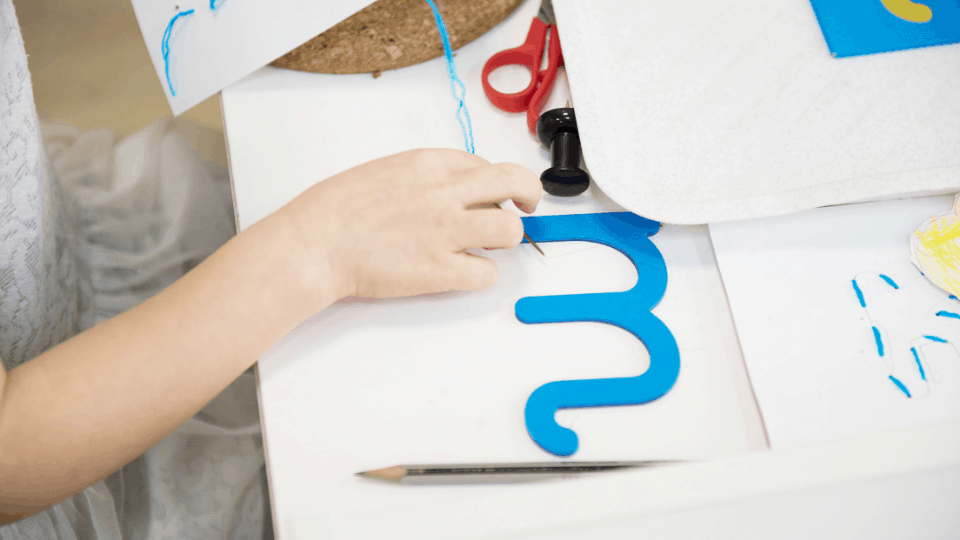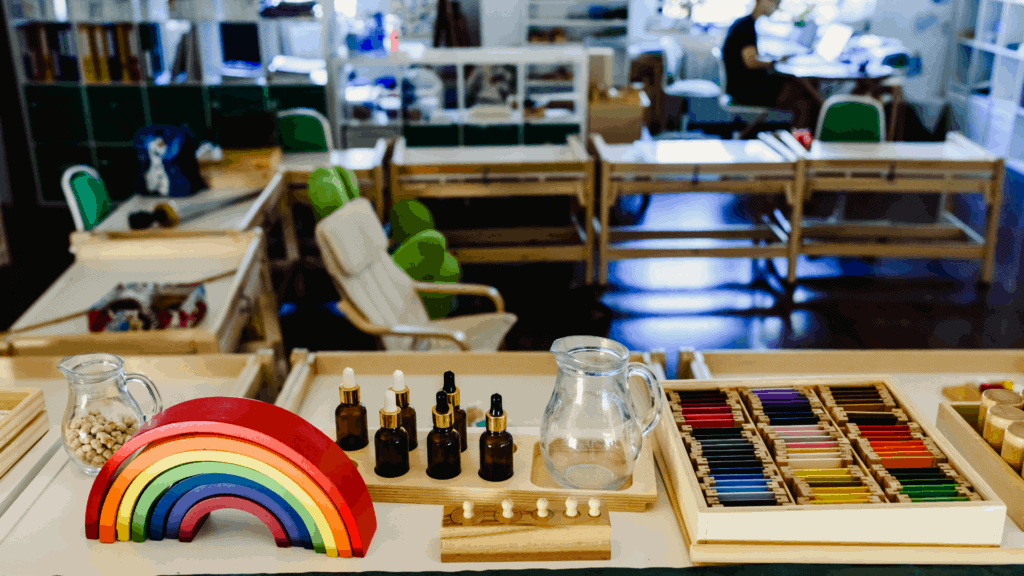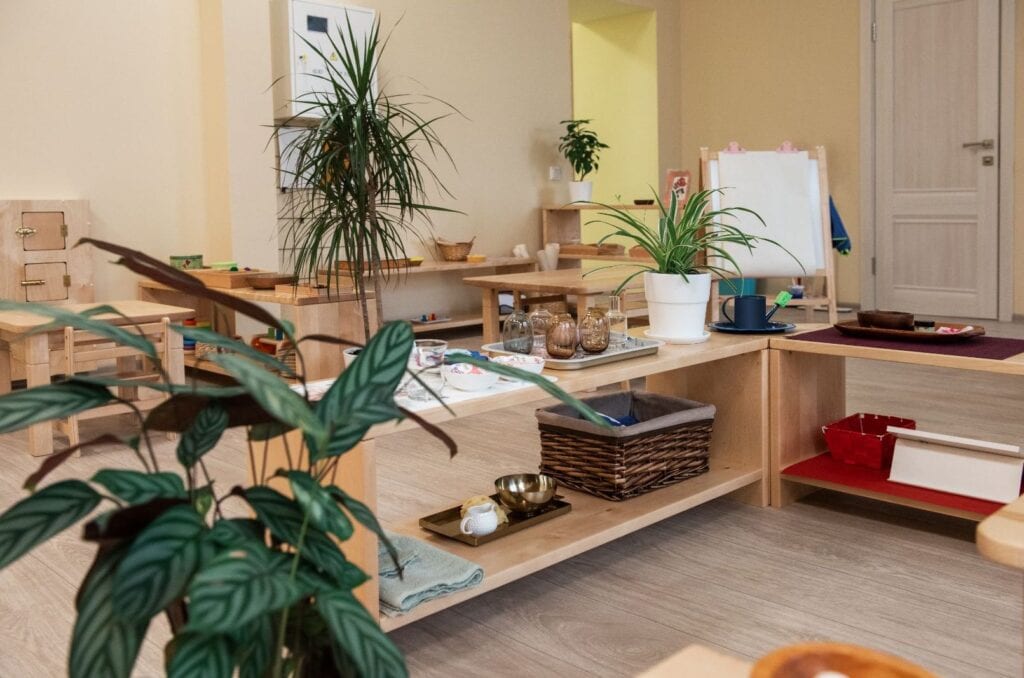In most traditional elementary schools, students usually learn cursive in the third grade, and there are some schools where it is not taught at all. In
Montessori schools teach cursive letter identification and writing before they teach print (or manuscript) because the fluid movement involved in writing cursive letters is easier for children to master. It is also easier for children to move from cursive writing to print than to move from print to cursive writing.
There are other advantages to teaching cursive before teaching print that keeps educators using this method even though cursive is declining in use. In this article, we’ll discuss these advantages, how

Why Do Children Learn Cursive First in Montessori Schools?
When Maria Montessori developed the
For Maria
There are several advantages to learning to write cursive before print that
- The fluid and connected letters do not require the student to lift the pencil, which makes cursive letters easier to write.
- Because the words in cursive are connected, it is easier to determine where one word ends, and the next begins. It also may make it easier for children to identify common groups of letters like “-ing” or “-ight.”
- Recognizing p, q, b, and d is much easier in cursive, and so is writing them without reversals.
- Many
Montessori educators believe that it is easier for children to move from cursive to print than from print to cursive, as is traditionally taught. - Cursives allows students (and people generally) to write faster.

How do Students Learn Cursive in Montessori Schools?
Learning to write cursive is taught at the child’s pace. Every student is different, and they all progress through the different stages of learning to write in their own time, but the progression will be similar for most students.
A lot of these steps can be introduced with significant overlap, but here is the general progression of learning to write:
- To begin learning cursive, students typically trace their fingers over cursive sandpaper letters. They begin with lowercase letters, and they are introduced to the letter sounds as well. The name of each letter is not taught at this stage. Only a handful of letters should be introduced at one time.
- Students practice writing each letter in a salt tray, using their fingers or some kind of writing instrument (wooden pens, sticks, and rocks are common).
- Next, students move on to using chalk and chalkboard. This is where it is handy to have several small chalkboards for children to use. They begin with an unlined chalkboard and typically work up to writing on a lined one. Students may be taught how to join letters together at this stage.
- Writing on paper begins once the student has formed a strong foundation in writing cursive on a chalkboard. Students usually start with unlined paper until they become proficient at writing on paper.
While students are learning to write letters, they may also be working with a moveable alphabet, like this one, which helps them learn to create words from sounds.

What Do Montessori Schools Use to Teach Cursive?
A
For teaching cursive, here is what most
- Cursive sandpaper cards, like these from Kid Advance. These cards allow students to practice tracing each letter and learn letter sounds while having a pleasant and fun sensory experience. This helps students learn faster and with more enjoyment, and they have proven again and again to be an effective method of teaching.
- Salt Trays, like this one from Kid Advance. The salt tray allows students to practice writing while having a sensory experience. Letters can be easily swept away and attempted again. They can be made by most any teacher using simple materials like a cookie sheet and a container of salt.
- Tracing boards, like this one from Cosmo Crafts. This is not as commonly found in every
Montessori classroom, but it makes a great addition. It allows students to practice the motion required for writing letters without becoming stressed about making a mistake, as some students do. - Chalkboards, like these green boards. These are a true staple in any
Montessori classroom. Writing in chalk is preferred for starting out because chalk is easy for children to hold, and the act of moving the chalk across the chalkboard provides sensory feedback. Pencils tend to glide and offer less opportunity for controlled movements. - Paper and more paper. Of course, all classrooms will have an abundance of paper so that students can practice writing whenever they want. Both unlined, blue-lined, red-lined, and primary ruled paper is usually used at different stages. Eventually, students write on wide-ruled or college-ruled paper.
How Do Montessori Schools Teach Print?
Print writing, also called block print or manuscript writing, is not formally taught in most
Any
Typing is usually introduced around the third grade, but this varies from school to school. Maria
Do All Montessori Schools Teach Cursive?
The main disadvantage of teaching cursive before print is that it might not be necessary to teach cursive at all. Most educational standards do not require students to learn cursive, and it is becoming less and less popular.
Typing has become the primary method of writing. Printing (or a sloppy combination of printing and cursive) is used when writing by hand is necessary.
So, not all
Conclusion
It is worth noting that there is no wrong approach here. Teaching cursive does have some advantages, as we’ve outlined above, and there is no harm in starting with cursive. However, as our society changes, it is also understandable why some educators are moving toward teaching print only. This matter is much debated, and there are merits to both points of view.
See also: How Montessori Pink, Blue, and Green Series Can Teach your Child to Read and Write, and How and Why Montessori Teaches Writing Before Reading.







